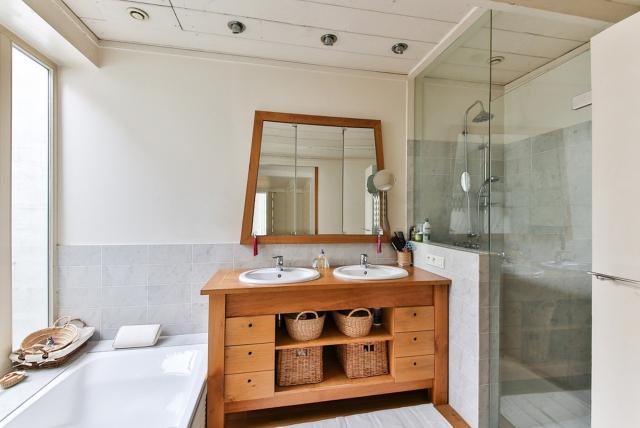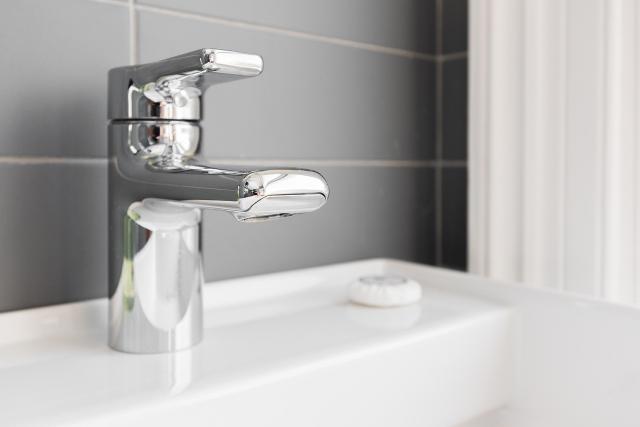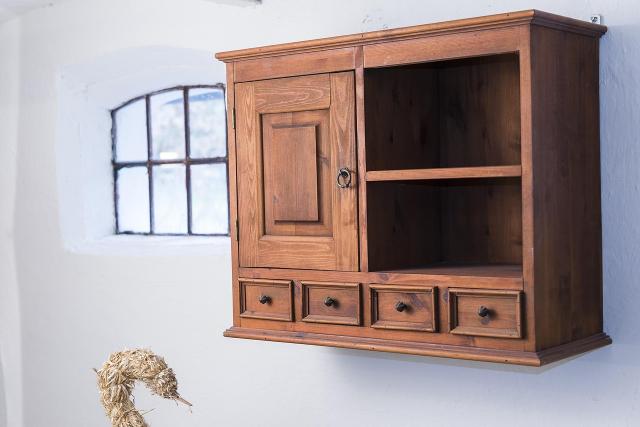
Best Interior Color for Bathroom: Psychology, Style & Ins...
The bathroom is more than just a functional room—it’s where your morning begins and where your da...

Choosing the perfect bathroom sink isn't as simple as it seems. It’s not just about looks—it’s about durability, convenience, ease of cleaning, and how it fits with your bathroom’s design. Whether you’re renovating your home or building from scratch, the sink is a detail that can define both functionality and style.
From affordable ceramic to eye-catching glass, timeless stone to innovative concrete, this guide breaks down the 8 best bathroom sink materials. Read on to find the right match for your needs, preferences, and lifestyle.
Ceramic sinks are one of the most common choices in American bathrooms for good reason. Made from fired clay with a glazed coating, these sinks are cost-effective and available in a wide range of shapes and colors. If you're looking for a timeless design that fits nearly any bathroom aesthetic—modern, traditional, or minimalist—ceramic is a solid bet.
Why It Works in the U.S.:
Affordable, making it a great choice for starter homes or guest bathrooms
Resistant to cleaning agents, dyes, and most acids
Handles hot and cold water with ease
Drawbacks:
The surface can develop fine cracks (crazing) over time
Glaze can wear off faster in budget models
You can’t drill extra holes after installation
Porcelain is essentially a higher-grade ceramic. It’s made from refined clay and fired at higher temperatures, making it denser, harder, and more durable. Porcelain sinks give off a soft luster and elegant feel, suitable for both vintage-inspired and upscale modern bathrooms.
Why Americans Love It:
Non-porous, hygienic, and long-lasting
Withstands aggressive cleaning agents and regular wear
Stays quiet when water flows into it (unlike metal or stone)
Easy weekly cleaning keeps it spotless
Downsides:
Heavier than ceramic, so it needs a stable mount or vanity
Typically more expensive than basic ceramic
If you're designing a small or contemporary bathroom, a tempered glass sink can add a sense of airiness and modern sophistication. These sinks are usually made from thick, reinforced glass that can handle daily use.
Great for American Urban Apartments or Powder Rooms:
Looks elegant and visually opens up tight spaces
Comes in various colors, shapes, and textures
Heat- and chemical-resistant
Pairs well with minimalist and high-tech interiors
What to Watch Out For:
Requires daily wiping to avoid watermarks
Transparent models may reveal plumbing underneath
Not as forgiving with dropped objects
Sinks carved from marble, granite, or travertine offer unmatched elegance and a custom look. Each piece is unique, with its own natural veining and texture. They bring a sense of grounding and serenity to the bathroom.
Perfect for High-End American Homes:
Exceptionally durable and long-lasting
Resistant to chipping, cracking, and mildew
Adds value to your home
Easily fits eco-friendly or nature-inspired design themes
Caveats:
Expensive and heavy—requires reinforced vanity or base
Sensitive to acidic or alkaline cleaners
Needs occasional sealing to maintain its finish
If you want the aesthetic of real stone without the price tag or weight, engineered stone is the way to go. These sinks are made from a mix of natural stone dust and resins, offering the same sleek look with added resilience.
Ideal for Modern Suburban Homes:
Stain-resistant and easy to clean
Better impact resistance than natural stone
Low water absorption means no dark spots or mildew
Can be molded into seamless, integrated sink-countertop units
Cons:
May contain synthetic materials and chemical binders
Seams or joints can collect dirt over time
Doesn’t last as long as real stone under heavy use
Concrete sinks—especially those made from microcement—have surged in popularity thanks to the rise of industrial and loft-style bathrooms. Each unit is usually custom-crafted, offering a raw and contemporary aesthetic.
Trending in American Urban Lofts and High-End Bathrooms:
Seamless construction makes it ultra-hygienic
Resistant to scratches and chemical cleaners
Customizable color and shape options
Minimalist and masculine look
Watch Out For:
Porous: absorbs water and may darken with use
Can crack under thermal stress if not treated
Long production and installation times
Often needs sealing to protect surface
Stainless steel isn’t just for kitchens anymore. When paired with a clean design, it brings a high-tech or minimalist feel to your bathroom. Durable and fuss-free, it's a functional choice for households with kids or multiple users.
Works Well in Contemporary American Bathrooms:
Comes in brushed, matte, polished, and colored finishes
Naturally antimicrobial and stain-resistant
Lightweight and easy to install
Affordable compared to natural materials
Possible Downsides:
Susceptible to surface scratches over time
Can be noisy when water hits the bowl
Yes, you read that right—wooden sinks are real and stunning. Crafted from hardwoods like teak, cedar, or walnut, they’re treated with sealants and resins to prevent moisture damage. These sinks bring an earthy, spa-like warmth to the space.
Best for Boutique Homes and Eco-Luxe Design:
Unmatched aesthetic: makes your sink a centerpiece
Eco-friendly when made from responsibly sourced wood
Resistant to mold and mildew thanks to special treatments
Limitations:
Prone to scratches and dents
Needs gentle, non-abrasive cleaning
Requires refinishing every 3–4 years to maintain beauty
Not suited for high-traffic or commercial bathrooms
When choosing a bathroom sink, the best material depends on your needs, budget, and taste. If you're after affordability and versatility, ceramic or porcelain will do the trick. If design impact is your priority, glass, stone, or wood make bold statements. For a modern yet practical choice, engineered stone or stainless steel are hard to beat. And if you’re craving something truly custom, concrete opens up exciting design possibilities.
Whichever direction you go, make sure the sink complements your bathroom’s overall style and is built to withstand daily use in the American home.

Best Interior Color for Bathroom: Psychology, Style & Ins...
The bathroom is more than just a functional room—it’s where your morning begins and where your da...

When choosing furniture for your bathroom, durability is just as important as design. Bathrooms a...

Thanks for joining our homeowners’ community.
Stay tuned!
Choose the category
Choose the category